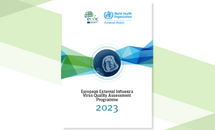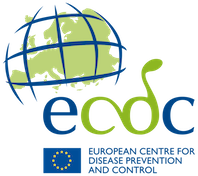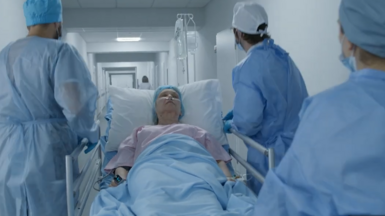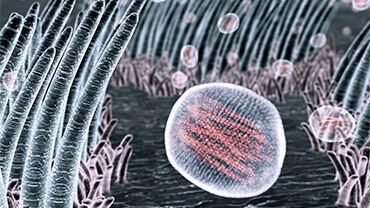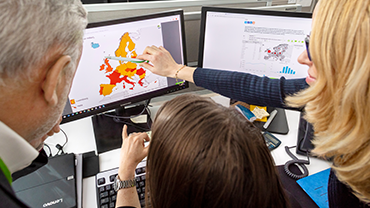European External Quality Assessment Programme, Influenza Virus 2023
This report presents the results of the External Influenza (virus) Quality Assessment Programme exercise (EEIQAP) 2023 for influenza reference laboratories in Europe.
Executive summary
Influenza epidemics occur every winter with high impact on disease burden, hospitalisations and excess mortality in the countries of Europe. To understand the characteristics of circulating influenza viruses during seasonal epidemics, virological influenza surveillance is performed, and detected viruses are further characterised at national influenza centres (NICs) that are part of the wider network of the WHO Global Influenza Surveillance and Response System (GISRS). External quality assessment (EQA) is an important instrument in assessing the quality of the generated data that are reported nationally and internationally through The European Surveillance System (TESSy) and presented in The European Respiratory Virus Surveillance Summary (ERVISS), the joint European Centre for Disease Prevention and Control (ECDC) and World Health Organization (WHO) Regional Office for Europe weekly update on respiratory virus infections.
From March to July 2023, a European External Influenza (virus) Quality Assessment Programme exercise (EEIQAP) was held for NICs and other national influenza reference laboratories in the European Union/European Economic Area (EU/EEA) and other countries in the WHO European Region. The exercise covered influenza virus molecular detection, isolation, strain genetic and antigenic characterisation and antiviral susceptibility testing. This was the eighth detection, isolation and strain characterisation panel and the sixth antiviral susceptibility testing panel since the start of the scheme in 2000.
Since EEIQAP 2010, all exercises have been organised with the support of the European Centre for Disease Prevention and Control (ECDC) and since EEIQAP 2018, with the additional support of the WHO Regional Office for Europe. The EEIQAP 2023 was organised by the contractor, the National Institute for Public Health and the Environment (RIVM) in Bilthoven, the Netherlands, for the European Reference Laboratory Network for Human Influenza (ERLI-Net). Participation of laboratories from the EU/EEA, Western Balkan countries and Türkiye was supported by ECDC. Participation in EEIQAP 2023 by laboratories in additional European countries was supported by the WHO Regional Office for Europe. For the third time, results are jointly presented for the EU/EEA together with other participating laboratories in the WHO European Region.
The objectives of the exercise were to collect information on the capacity and capability of the network regarding i) rapid molecular influenza virus detection, A/B typing, type A H- and N-subtyping and B lineage determination by reverse transcription polymerase chain reaction (RT-PCR), ii) influenza virus isolation and strain characterisation using antigenic and/or genetic techniques, and iii) antiviral susceptibility testing using genetic and/or phenotypic techniques, within a defined reporting timeframe of seven working days for i) and 36 working days for ii) and iii).
This exercise aimed to provide the participants with an independent assessment of their own laboratories’ performance and a comparison with other reference laboratories for influenza in the European Region. In addition, performance in the EEIQAP 2023 provided a validity check of the data reported to TESSy. For the first time in 2023, the programme included genetic testing for reduced susceptibility markers to the antiviral drug baloxavir marboxil (BXM). Reporting of the sequence data obtained for the hemagglutinin (HA), neuraminidase (NA) and acidic polymerase (PA) coding genome segments was included in conjunction with reported genetic characterisation data.
A total of 53 laboratories in 44 of the 53 countries in the WHO European Region participated in the EEIQAP 2023 Molecular Detection challenge. Nineteen laboratories participated in the full programme, including the Characterization and Antiviral Susceptibility challenge. The panel consisted of seven simulated clinical specimens containing variable amounts of live virus, one simulated clinical specimen that did not contain virus, and three inactivated specimens containing viruses with neuraminidase inhibitor-reduced inhibition or baloxavir-reduced susceptibility.
Overall, the performance of the network in molecular detection and simultaneous typing and type A H-subtyping of seasonal influenza viruses can be rated as excellent (52 of 53 laboratories were able to determine the type and 50 of 51 determined the A H-subtype correctly). Those laboratories determining the N-subtype of type A influenza viruses and lineage of type B viruses demonstrated satisfactory to excellent performance (10 of 16 laboratories were able to determine the N-subtype and 41 of 43 laboratories correctly determined the B lineage). Surveillance data reported weekly to TESSy that derive from molecular testing can therefore be considered accurate. However, an increase in the number of laboratories with capability to N-subtype and to determine the B-lineage would be desirable. Similar to the EEIQAP 2018 and EEIQAP 2020, the EEIQAP 2023 showed that the issue with the performance of the network in virus isolation still persists (10 of 31 laboratories that participated in this challenge were able to isolate virus from all influenza virus-containing specimens). Not being able to isolate a virus has an immediate impact on the number of isolates available for antigenic characterisation and phenotypic antiviral susceptibility testing, as well as subsequent reporting to TESSy. Although there was satisfactory-to-good concordance among laboratories in the reported antigenic and genetic characterisation categories for the EEIQAP 2023 panel specimens, the results also indicate that subtle antigenic differences between viruses, and differences in amino acid changes defining genetic categories are not picked up accurately (only 4 out of 23 laboratories provided completely correct results for reported specimens). Therefore, the weekly analysis and interpretation of genetic and antigenic characterisation data reported to TESSy in the predefined categories should be interpreted with some caution. Genetic and phenotypic testing of antiviral susceptibility varied in accuracy from satisfactory to excellent when looking at the sequence and IC50 (50% Inhibitory Concentration) data obtained. However, interpretation of less common amino acid change data and phenotypic testing of such viruses was inaccurate for a relatively high number of laboratories (7 of 23 laboratories provided fully correct amino acid substitutions results for reported specimens and 4 of 17 laboratories provided fully correct phenotypic results for reported specimens). This complicates the analysis of antiviral susceptibility data reported to TESSy.
While the overall performance of the participating laboratories was satisfactory, some laboratories are encouraged to enhance their testing performance by evaluating the sensitivity and specificity of the assays in place and to apply necessary updates accordingly. Other issues (e.g. incorrect translation into TESSy categories) will be addressed jointly by ECDC and the WHO Regional Office for Europe through training or by adapting validation and analysis of data captured in TESSy (e.g. by making better use of reported HA and NA sequences, with a particular focus on sequence analysis, interpretation and reporting).
Download
